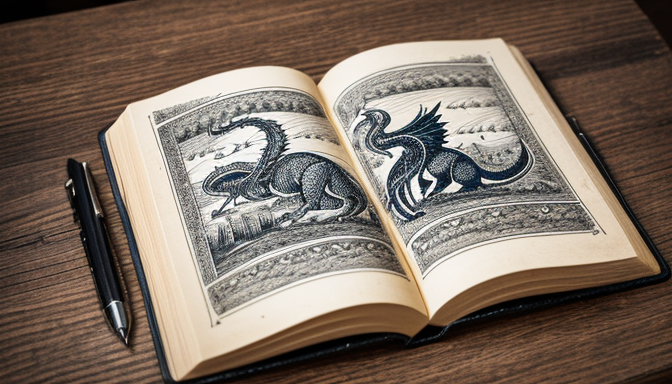Storytelling is an ancient art, a powerful tool that has the ability to transport us to different worlds, evoke deep emotions, and even challenge our perspectives. Imagine curling up with a book, the pages whispering secrets that resonate with your very soul. Famous authors have mastered this craft, weaving tales that linger long after the last page is turned. But what can we learn from them? Let’s dive into the essence of storytelling and uncover the invaluable lessons that can inspire both writers and readers alike.
Character development is crucial in storytelling. It’s not just about creating a name and a backstory; it’s about crafting individuals that leap off the page and into our hearts. Think about your favorite characters—what makes them unforgettable? Renowned authors like J.K. Rowling and Harper Lee have shown us that relatable flaws and aspirations make characters feel real. They breathe life into their stories by ensuring that each character has a distinct voice, a unique journey, and a purpose that resonates with the audience. As a writer, consider the following when developing your characters:
- Depth: Give your characters a rich backstory.
- Growth: Let them evolve throughout the story.
- Relatability: Infuse them with human emotions and experiences.
Conflict drives stories forward. Without it, we’re left with a flat narrative that fails to engage. Successful authors like George R.R. Martin and Jane Austen craft compelling conflicts that not only challenge their characters but also reflect real-life struggles. The resolution, then, becomes a moment of catharsis for both the characters and the readers. It’s like a rollercoaster ride—without the ups and downs, where’s the thrill? To master this element, think about how your characters can face obstacles that test their limits, ultimately leading to a satisfying resolution that leaves readers pondering long after they’ve closed the book.
The Art of Character Development
When it comes to storytelling, character development is the heart that pumps life into the narrative. Think about your favorite books or films; what do you remember most? It’s often the characters—their quirks, struggles, and triumphs—that stick with us long after the story ends. Renowned authors like J.K. Rowling and Harper Lee have mastered this art, creating characters that feel as real as your best friend. How do they do it? It all starts with depth.
Great authors don’t just sketch their characters; they build entire worlds around them. For instance, consider how Fitzgerald brought Gatsby to life with a blend of ambition and mystery. Readers are drawn to characters with flaws and strengths, making them relatable and human. This complexity allows readers to see parts of themselves reflected in the characters, forging a deeper connection.
Moreover, character growth is essential. A character should evolve, facing challenges that push them beyond their limits. This transformation keeps readers engaged, as they root for the character’s success. Just like in life, where we grow through experiences, characters should embark on journeys that lead to self-discovery.
In summary, effective character development is a blend of realism, growth, and relatability. By creating characters that resonate with readers, authors not only enhance their narratives but also leave a lasting impact on their audience. So, next time you write, think about how you can breathe life into your characters—after all, they are the soul of your story!

The Importance of Conflict and Resolution
Conflict is the heartbeat of any compelling story; it’s what keeps readers on the edge of their seats, eagerly turning pages to see what happens next. Think of conflict as the fuel that drives the narrative forward, much like how a car needs gasoline to keep moving. Renowned authors like J.K. Rowling and George R.R. Martin masterfully weave tension into their tales, creating situations where characters face insurmountable odds. This not only captures the reader’s attention but also allows them to connect emotionally with the characters.
Moreover, resolution is equally vital, serving as the light at the end of the tunnel. It’s the moment when all the built-up tension finds a release, and readers can finally take a breath. Without resolution, stories can feel incomplete, leaving readers hanging like a cliff without a view. Consider how Shakespeare often provided catharsis in his plays through poignant resolutions, allowing audiences to reflect on the lessons learned.
Incorporating conflict and resolution effectively can transform a simple plot into a rich tapestry of human experience. Here are a few key elements that successful authors often utilize:
- Internal vs. External Conflict: Characters may struggle with their own fears or face challenges from outside forces.
- High Stakes: The greater the risk, the more engaging the conflict becomes.
- Character Growth: Conflict often leads to significant changes in characters, making them more relatable and memorable.
Ultimately, the dance between conflict and resolution is what makes storytelling a powerful art form. It allows both writers and readers to explore the depths of human emotion, creating a shared experience that resonates long after the last page is turned.
Frequently Asked Questions
- What makes storytelling so powerful?
Storytelling taps into our emotions and imagination. It creates a connection between the storyteller and the audience, allowing us to experience different perspectives and cultures. Think of it as a bridge that links hearts and minds!
- How do famous authors develop their characters?
Famous authors often use deep backstories, relatable flaws, and unique traits to craft characters that feel real. They make us care about these characters, almost like they’re friends we root for. It’s all about making them memorable!
- Why is conflict essential in storytelling?
Conflict is the engine that drives the narrative forward. It creates tension and keeps readers on the edge of their seats. Without conflict, stories would be as exciting as watching paint dry!
- Can anyone become a good storyteller?
Absolutely! Storytelling is a skill that can be honed with practice. Just like learning to ride a bike, the more you do it, the better you get. So grab that pen or keyboard and start weaving your tales!